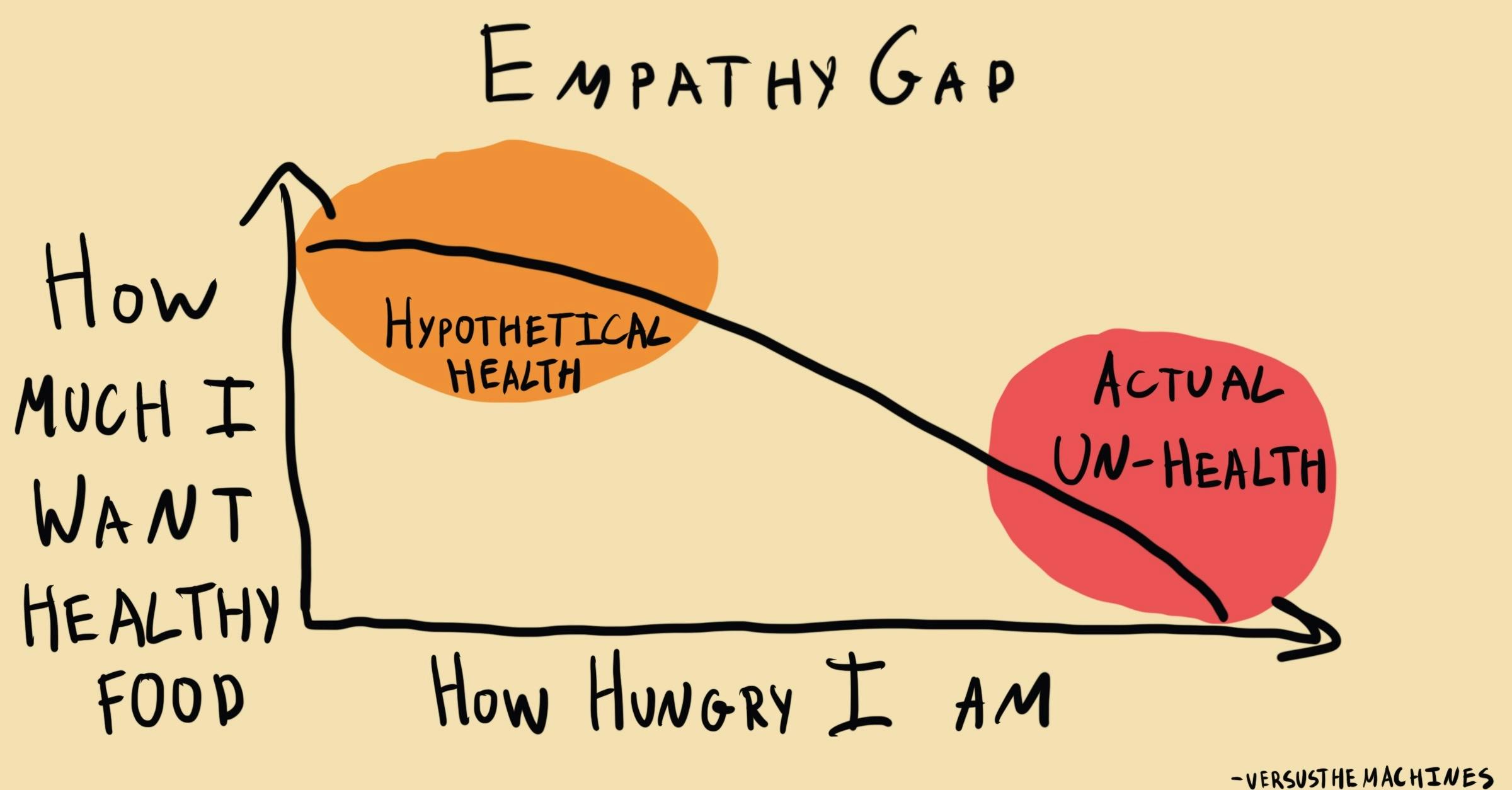Why do we mispredict how much our emotions influence our behavior?
Empathy Gap
, explained.What is the Empathy Gap?
The empathy gap describes our tendency to underestimate the influence of varying mental states on our own behavior and make decisions that only satisfy our current emotion, feeling, or state of being.

Where this bias occurs
The empathy gap is also sometimes referred to as the hot-cold empathy gap. This is a reference to two kinds of visceral (internal, bodily) states. ‘Hot’ visceral states are when our mental state is influenced by hunger, sexual desire, fear, exhaustion, or other strong emotions. A ‘cold’ mental state is one that is not being influenced by emotion and is usually more rational and logical.1 When we are in either a hot or cold mental state, we fail to acknowledge the temporary nature of that state and are unable to put ourselves in the mindset of others. In other words, we tend to overestimate how rational we’ll be when we’re calm, or assume we’ll always feel as intensely as we do when we're emotional.
For example, imagine you are asked how you would respond in a situation where an unconscious person is in need of help. Since you are currently not in that intense situation, you might have a very rational response, such as claiming that you would perform CPR. You predict a logical response because you are currently in a “cold” state of mind. However, if you found yourself in that situation, fear and anxiety might cause you to behave very differently. You would be in a hot mental state, and powerful emotions may influence how you behave. This situation demonstrates the empathy gap, where we are unable to correctly predict how we will behave because we make our predictions based on current emotional states.
The difficulties we have in evaluating the influence of feelings, emotions, and other visceral states on our emotional perspective-taking have been referred to as the ‘dual judgement model.’ As psychologists and social scientists Leaf Van Boven, George Loewenstein, David Dunning, and Loran Nordgren note, it stands to reason that if we struggle to empathize with our own future selves, we will also find it difficult to empathize with other people’s emotions5:
“Given that people exhibit empathy gaps when estimating their own reactions to different emotional situations, the dual judgment model implies that they will exhibit corresponding empathy gaps when estimating others’ reactions to different emotional situations.”
While the empathy gap often has to do with a lack of empathy for ourselves, it can also describe our inability to understand other people’s perspectives or actions if they are not in the same visceral state as we are.
Empathy gaps, therefore, are not all the same. They can be broadly categorized based on their connection to time (past or future) and whether they occur within an individual (intrapersonal) or between individuals (interpersonal):
- Intrapersonal Prospective Empathy Gap: This occurs when we struggle to predict our own future behavior when in a different emotional or physical state. For example, a smoker who feels relaxed after a cigarette might assume that quitting in the future will be easy. Similarly, someone experiencing deep grief may find it impossible to imagine ever feeling happiness again.
- Intrapersonal Retrospective Empathy Gap: This happens when we struggle to recall or understand our past behavior because we are no longer in the same emotional or physical state. A common example is feeling a state of calm after an argument with someone and being unable to comprehend why we previously lost our temper.
- Interpersonal Empathy Gap: This refers to the difficulty of understanding another person’s feelings or behavior when they are in a different state from our own. For instance, a well-rested person may struggle to understand the exhaustion and frustration of a sleep-deprived parent caring for a crying baby.














